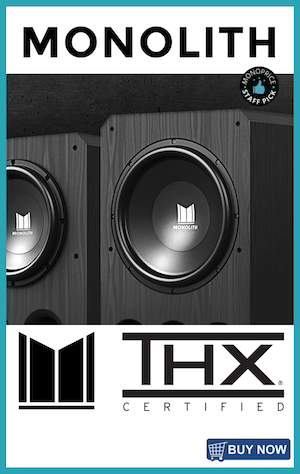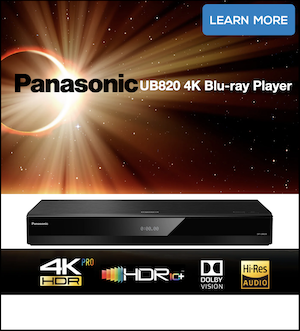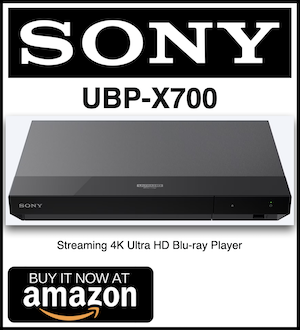(January 24, 2024) Piggybacking on yesterday's article detailing the health of the TV market, today's piece is a comprehensive look at the latest 2024 TV announcements from Sony, Hisense, LG Electronics, Samsung, and TCL. Pricing won't be announced for several months, so we don't have any numbers to share, but the following is a summary of the details we currently know... and you need to know!
Sony
For the second year in a row, Sony didn’t use its CES platform to showcase new TVs. Instead, it focused on various technologies and initiatives that support creators, including a new mixed-reality headset for spatial content creation. The headset, a first to use Qualcomm's new XR2+ Gen 2 Chip, was a surprise reveal at Sony's opening keynote at the show.
According to Sony, the headset features an 8K display crafted from 4K OLED microdisplays dedicated to each eye, and will eventually be packaged with Siemens NX Immersive Designer software for use by engineering, design, and product teams that aren’t physically present in the same location. Sony will likely sell the headset with other software packages down the road but says it won't be spun off for consumer applications. Unfortunately, this one appears destined for use in business verticals only.
While Sony didn’t show new TVs at CES, Flatpanels HD says it was privy to a late-year 2023 event in Tokyo, Japan, where the company demonstrated its latest take on miniLED LCD technology. Key developments include a new 22-bit miniLED driver, more dimming zones than previous models, and enhanced energy efficiency. Demos highlighted better light control and reduced blooming, both of which are key to reducing the perception of light bleed around bright objects on dark backgrounds.
Flatpanels HD says the miniLED prototype used at the demonstration outperformed last year's model in brightness and power efficiency. As for final product details, including technology names and specific features, those remain undisclosed.
LG Electronics
While LG’s stature in the TV space has slipped in recent years, it remains a major player, and for good reason. Its OLED models, particularly those featuring last year's new META panels, have proven to deliver incredibly delicious images that rival the best on the market.
With CES being the land of new, LG used the show to announce its latest “META Technology 2.0” OLED tech. This second-generation panel features a 42% increase in brightness over traditional OLED displays, achieving an impressive 3,000-nit peak brightness. It comprises three key components: Micro Lens Array Plus (MLA+), META Multi Booster, and Detail Enhancer. These elements work together to enhance light emission, optimize brightness and color, and maintain consistent color accuracy at various brightness levels.
META Technology 2.0 also improves energy efficiency and reduces blue light emissions, contributing to better eye health and environmental sustainability.
LG’s 2024 OLED TV lineup, headlined by the Signature OLED M4 and the OLED G4, is powered by a new Alpha 11 AI processor. This processor promises a 70% improvement in graphic performance and a 30% increase in processing speed compared to its predecessors, providing vibrant, lifelike visuals and an immersive audio experience.
The OLED M4 line, a standout among LG's offerings, includes a new 65-inch size. Among many high-level attributes, the M4 is the world’s first TV to offer wireless video and audio transmission at up to 4K 144 Hz. Yes, you read that correctly, practically lag-free wireless 4K transmission at 144 Hz. Not only does this remove bulk behind the display panel, but it also gives owners tremendous flexibility when it comes to mounting a television and eliminating wires (save for the power cord). We covered this line at CEDIA 2023, click here to see it in action.
Let’s not forget that LG has a healthy LCD market presence as well, bolstered by its QNED miniLED TVs that combine miniLEDs with Quantum Dot and NanoCell technologies. The company’s 2024 QNED lineup comprises several tiers primarily differentiated by levels of onboard processing power. The QNED99T (8K, 75" and 86") line features an Alpha 9 processor, renowned for its AI-trained algorithms that enhance both video and audio quality. The QNED90T and QNED85T lines are equipped with the new Alpha 8 processor, which benefits from several features found on the Alpha 9. And, the budget-conscious QNED80T series utilizes LG's step-down Alpha 5 Gen 7 processor.
The QNED90T, QNED85T, and QNED80T are all 4K resolution TV series, with screen sizes ranging from 43” to 98”.
Last but not least, LG’s big 'future tech' splash was a 77” transparent OLED display. Dubbed the Signature T, this bizarre-looking creation features a contrast film that can be adjusted to alternate between a traditional OLED display and a transparent mode. It runs a custom webOS interface optimized for the transparent display and includes widgets tailored for its unique screen, offering a simplified and less cluttered user experience. LG has yet to commit to a specific launch timeframe or price for the Signature T, but it's expected to be a premium offering in their lineup.
Samsung
Much like LG, Samsung is hitting 2024 with new TVs equipped with bigger and badder AI. No, the TVs aren’t laced with ChatGPT, but they do carry technologies to further improve upscaling and motion enhancement. And the company's new Active Voice Amplifier Pro is debuting as a technology that can boost dialog intelligibility.
Found on the company’s new QLED 8K TVs (QN800D and QN900D, 65” to 85”), a new NQA AI Gen3 processor is billed to be twice as fast as its predecessor with 8 times the neural networks. Samsung is using the processor to upscale native SD and HD content to 4K and native 4K content to 8K, which is good news for early adopters wanting an 8K TV despite a dearth of true 8K media. The processing also improves motion with its AI Motion Enhancer Pro, a tech that locks on and tracks specific objects, such as a ball, to eliminate annoying blur during fast-moving action.
And, for gamers, the QN900D supports 240 Hz VRR (Variable Refresh Rate). That means you can experience incredibly fast and smooth gaming without sacrificing resolution.
Samsung’s 4K LCD announcements are headlined by its Neo QLED QN90D, now offered in a 98” size. Additionally, the company’s 2024 crop of QLED 4K TVs will feature an updated Neural Quantum Processor with improved 4K upscaling and a Real Depth Enhancer Pro feature for improved clarity and contrast of specific objects while maintaining background details of an image.
On the OLED front, Samsung’s QD OLED (Quantum Dot OLED) TVs have proven to be an industry game changer, delivering previously unthinkable levels of brightness and forcing LG Display to develop its META panels. This year, Samsung says QD OLEDs will feature a glare-free technology in its S95D series (55”-77”) that enables bright room viewing without impacting viewing angles, contrast, or color. In addition, the company says its 2024 QD-OLED panel is 20% brighter than last year's, with up to 3000 nits of peak brightness.
Another Samsung OLED line, the S90D, is scaling back its size offerings to 55" through 77”, dropping an 83” model. Unlike the S95D, the S90D and the less expensive S85D series use LG Display’s W-OLED panels.
Lastly, Samsung’s microLED displays are still in the conversation, but shrinking them to smaller sizes remains an issue. MicroLED is an emissive technology that many believe could ultimately dethrone OLED, but cost and size scalability have remained big stumbling blocks. Samsung arrived at CES 2023 with a 76” model, which remains the smallest microLED TV in its range (current sizes include 76”, 89”, 101”, 114”, and 140”).
TCL
TCL enters 2024 as the third-largest manufacturer of TVs on the planet, considering units shipped during 2023, and appears to be pushing its footprint further into upscale territory.
TCL’s headline announcement at CES was a new 115” miniLED TV with Quantum Dot technology – the largest of its kind. The 115QM89 is closely related to the company’s QM8 line that offers TVs sized 65” to 98”, but adds an impressive 6.2.2 channel audio system and TCL’s AIPQ Ultra processor. While many manufacturers won’t detail total dimming zones, TCL says the 115QM89 possesses 20,000 zones spanned across the display’s surface.
Adding to its premium offerings, TCL also used CES to debut its Q6-Pro series (50” to 85”) with improved local dimming that promises to boost brightness by 33%, and the miniLED QM7 that boasts improvements in brightness and onboard processing speeds. And let’s not ignore TCL’s bread-and-butter budget-oriented offerings, which were bolstered by the newly announced 4K S5 series. Outfitted with screen sizes ranging from 43” to 85”, TCL says that S5 TVs are brighter than last year’s S lineup, with better color and HDR Pro+ and Dolby Vision compatibility.
Hisense
Last but not least, we have Hisense, the world's second-largest producer of TVs. Much like TCL, Hisense arrived at CES with size on its mind, revealing that it realized a significant uptick in sales during 2023 for TVs sized 85” and larger. To capitalize, Hisense's premium ULED X series is gaining 98” and 110” models, while its regular QLED TV line is gaining a 100” option.
The 110” ULED X 110UX is loaded with dimming zones – 40,000 to be exact – while promising 10,000 nits of peak brightness and 95% coverage of the coveted BT.2020 color space. Much like TCL’s 115QM89, the 110UX has a healthy built-in speaker system with 4.2.2 channels of output, but adds the power of Dolby Atmos FlexConnect for wireless connection of external speakers and an even bigger audio experience.
The smaller 98" 98UX steps back its local dimming to 10,000 zones but doesn’t scale back audio. It, too, carries a 4.2.2 speaker array with Dolby Atmos FlexConnect. Both models employ 144 Hz refresh rates, Dolby Vision, IMAX Enhanced Certification, and a Filmmaker Mode that gets a TV in a calibrated-like state for a reference experience.
The step-down 100” U76N QLED also features IMAX Enhanced certification and a Filmmaker Mode. It also possesses a native 144 Hz refresh rate. Pricing on this model is expected to be aggressive; remember, Hisense's 100” U8 Series TV can frequently be found for sale in the $2,500 to $3,500 range.
Other Notable Display News
CES is always good for fun techy news, as is the case with TCL CSOT’s announcement. TCL CSOT is TCL’s display manufacturing subsidiary and a major force in the LCD space. According to Rasmus Larsen at FlatpanelsHD, the company showed an LCD prototype at CES that reduces viewing angle issues with VA LCD panels. WHVA (where the “W” stands for “Wide”), according to Larsen, appears to keep black levels intact at extreme angles while also keeping color nicely in check.
It’s possible WHVA could find its way to market next year.
TCL CSOT also showed an extremely thin LCD bezel at CES. The panel’s top and sides measured 2.7mm, with a bottom edge landing at 7.7mm. That brings the overall physical look and feel of an LCD TV closer to what we experience with OLED TVs.
And lastly, Sharp showcased a NanoLED display prototype to large outlets such as CNET and Digital Trends. Developed in cooperation with Nanosys, this quantum dot technology finds the dots directly driven by electricity, turning them into millions upon millions of tiny LEDs without the need for backlighting.
NanoLED could become a technology capable of delivering the widest color gamut seen to date, not to mention having applicability to the largest range of display products, from smartphones to TVs and VR to laptops, on the market. And to add a sprinkle of intrigue, Sharp says the technology could easily be manufactured in retro-fitted LCD manufacturing plants.
Additional Reading:
- Going Up and Going Down: TV Market Trends and Predictions as We Enter 2024
- Sony Pictures Home Entertainment Celebrates Columbia Picture's 100th Anniversary with Massive Sale
- LG Says OLED Sales are Down, May Offer an OLED TV Sized Smaller than 42-Inches
- Portrait Displays Launches the C7 HDR, a High-Luminance Colorimeter That's Light on Price, Heavy on Performance
Last edited:













